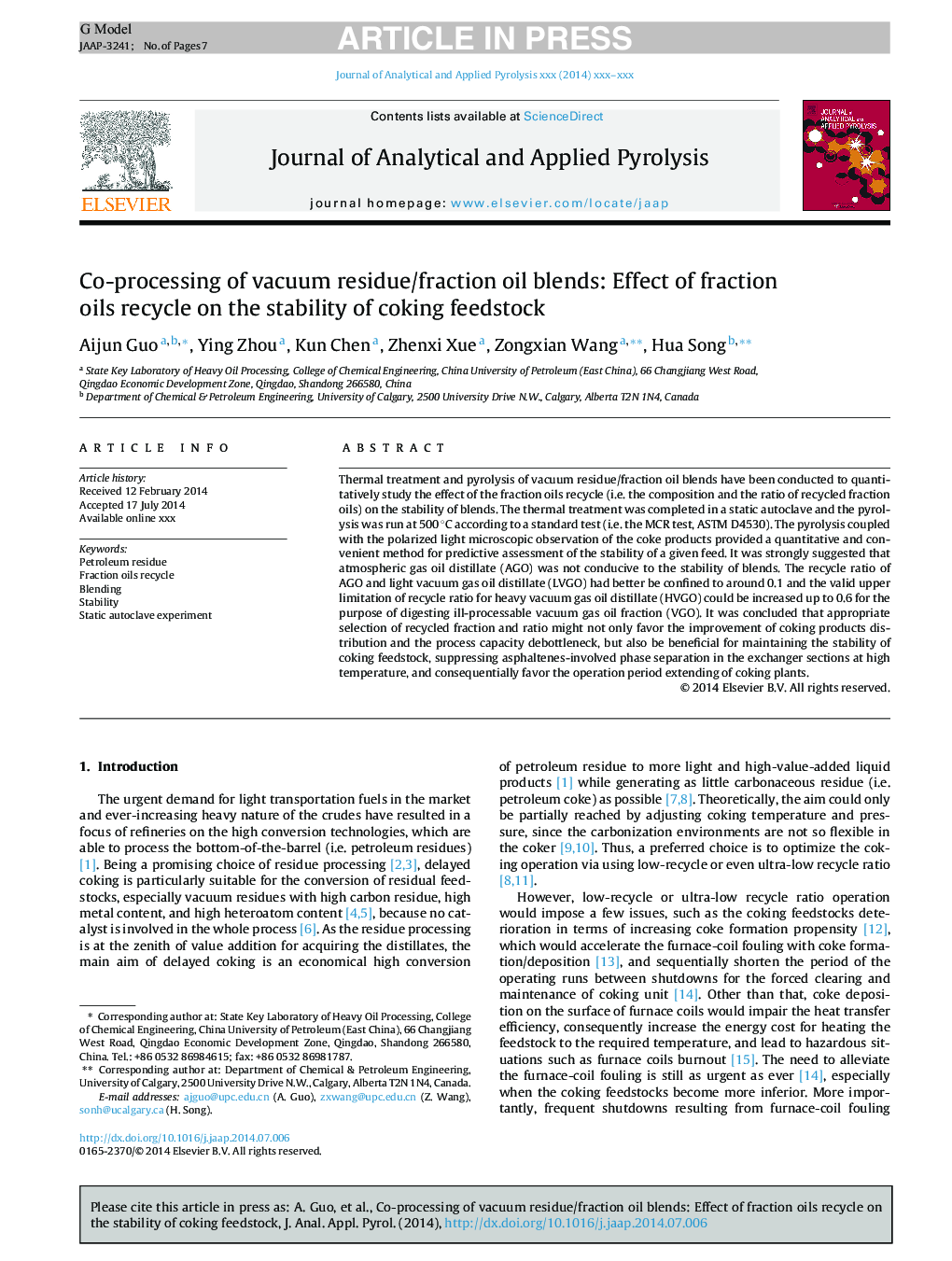| Article ID | Journal | Published Year | Pages | File Type |
|---|---|---|---|---|
| 7606891 | Journal of Analytical and Applied Pyrolysis | 2014 | 7 Pages |
Abstract
Thermal treatment and pyrolysis of vacuum residue/fraction oil blends have been conducted to quantitatively study the effect of the fraction oils recycle (i.e. the composition and the ratio of recycled fraction oils) on the stability of blends. The thermal treatment was completed in a static autoclave and the pyrolysis was run at 500 °C according to a standard test (i.e. the MCR test, ASTM D4530). The pyrolysis coupled with the polarized light microscopic observation of the coke products provided a quantitative and convenient method for predictive assessment of the stability of a given feed. It was strongly suggested that atmospheric gas oil distillate (AGO) was not conducive to the stability of blends. The recycle ratio of AGO and light vacuum gas oil distillate (LVGO) had better be confined to around 0.1 and the valid upper limitation of recycle ratio for heavy vacuum gas oil distillate (HVGO) could be increased up to 0.6 for the purpose of digesting ill-processable vacuum gas oil fraction (VGO). It was concluded that appropriate selection of recycled fraction and ratio might not only favor the improvement of coking products distribution and the process capacity debottleneck, but also be beneficial for maintaining the stability of coking feedstock, suppressing asphaltenes-involved phase separation in the exchanger sections at high temperature, and consequentially favor the operation period extending of coking plants.
Keywords
Related Topics
Physical Sciences and Engineering
Chemistry
Analytical Chemistry
Authors
Aijun Guo, Ying Zhou, Kun Chen, Zhenxi Xue, Zongxian Wang, Hua Song,
